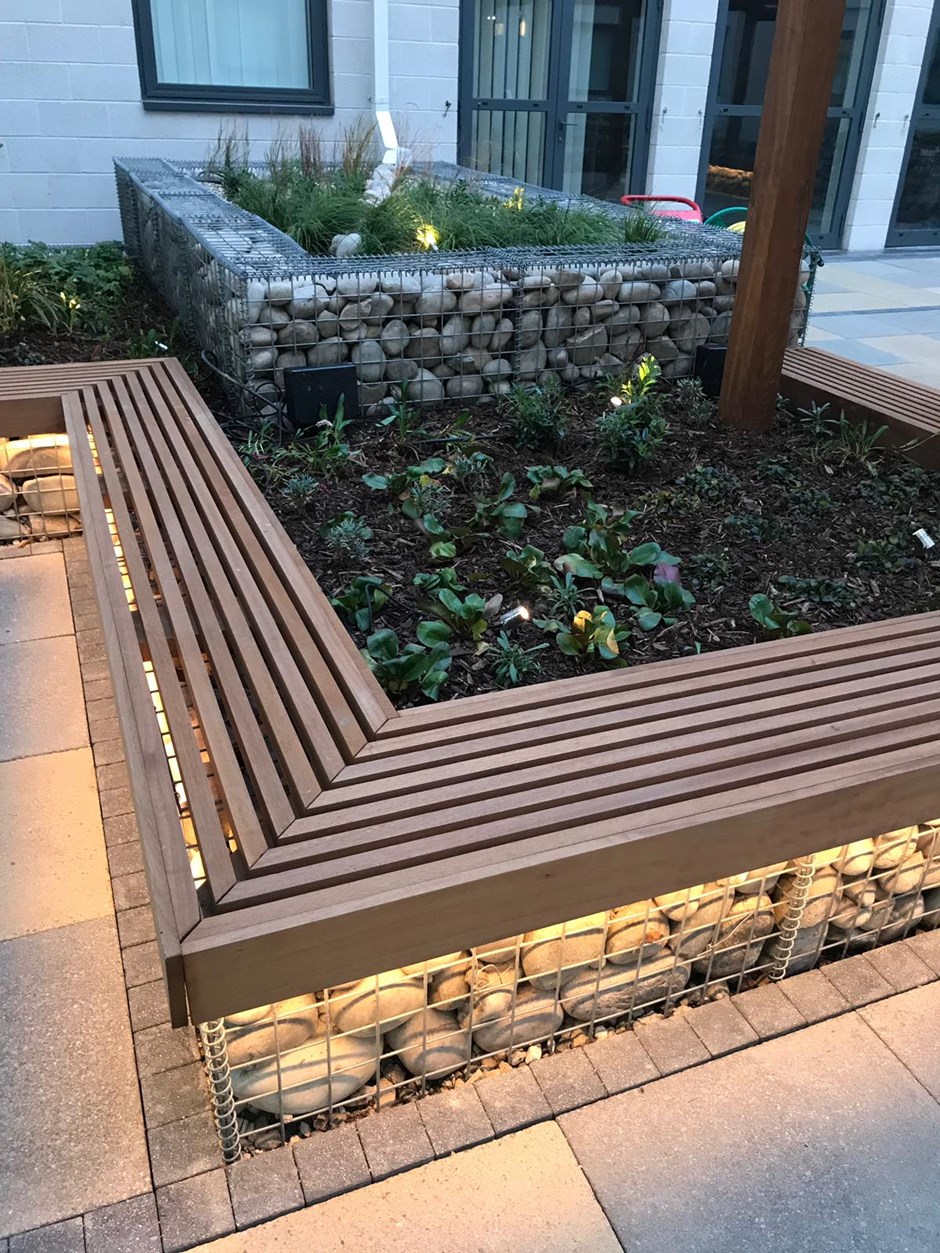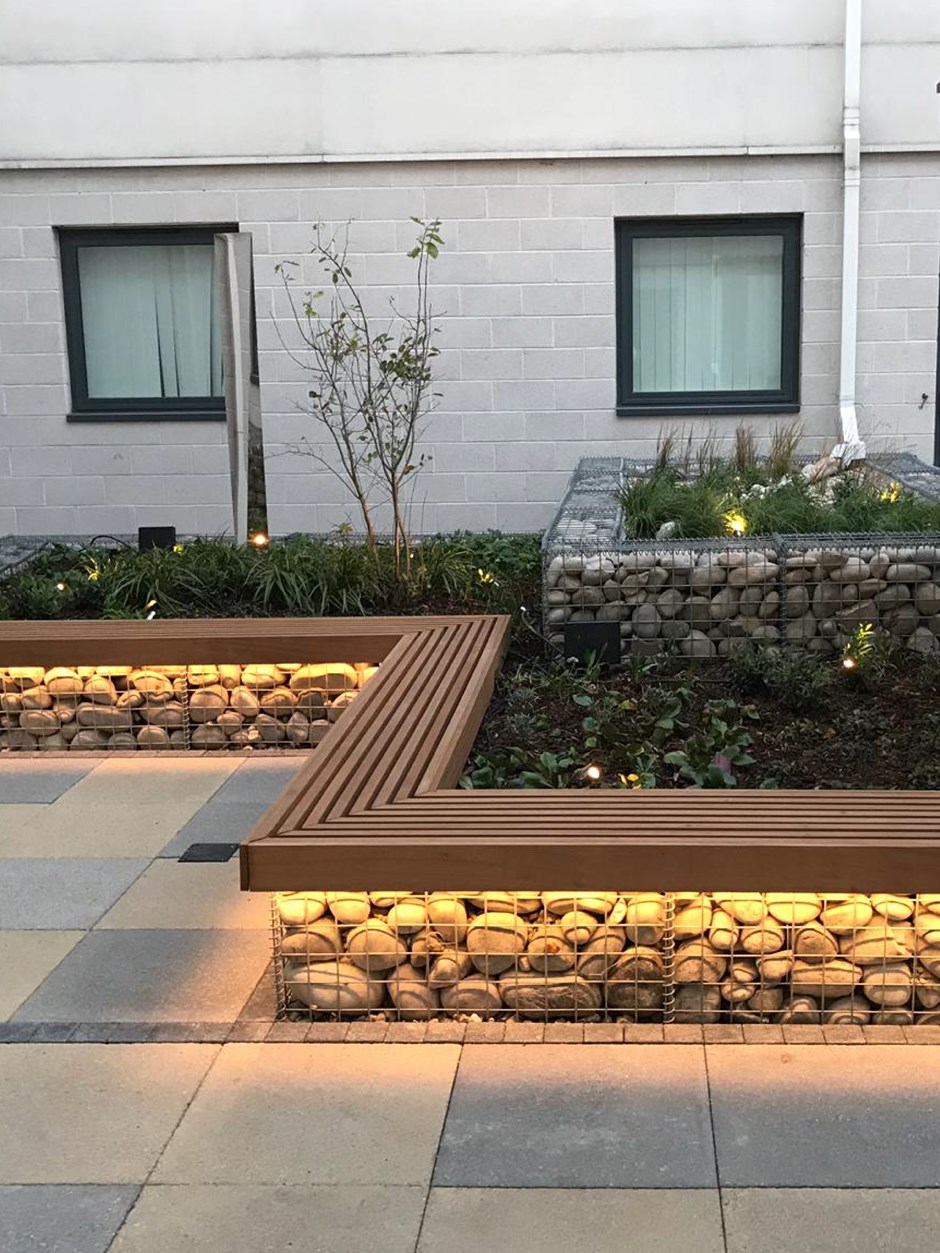Rainwater Re-use
Rainwater and stormwater re-use helps to control discharge volumes and it helps to mitigate against water scarcity. There may be government funded grants for developments who incorporate rainwater reuse and rainwater harvesting.
The below information in this section is based upon BS EN 16941-1:2018 article on On-site non-potable water systems - Part 1: Systems for the use of rainwater.
Wherever possible new developments should employ rainwater re-use (e.g. rainwater harvesting and stormwater harvesting), which helps reduce potable water demand and the discharge of water. Rainwater can be utilised for a variety of applications e.g. cleaning, irrigation, flushing toilets. Designers and planners should where possible obtain from the local water supply company information about the degree of water scarcity in the area of the development (including climate change implications for water resource security and likely increases in demand). Where there is pressure on water resources, rainwater re-use systems should form part of the surface water management strategy for the site. It is also good for sites where it is difficult to meet the 1 in 1 greenfield discharge rate. Rainwater and stormwater re-use can be seen as both a stand-alone option, as well as part of a wider strategy including SuDS, flood alleviation and water conservation measures, in response to changing climate and increased usage pressures. Rainwater and stormwater re-use systems can be incorporated into the storage capacity of the development. This can be shown by providing average figures for the specific feature. These figures should show how much water the feature can hold and how much of this water on average will be used, therefore highlighting its average capacity. This can therefore be used towards the storage totals. Whilst water butts fall within the definition of rainwater harvesting, the use of water butts must not be included in any storage calculations, as they rely on their owners emptying them before storm events.
Any rainwater or stormwater re-use system should have 4 main elements; collection, treatment, storage and distribution of water. Any system should be economic and practical; considering the local rainfall pattern, the size of the collection surface, the surface’s materials and their drainage characteristics, sizing and material of piping systems, the levels of pollution of the collection surface and the risk of contaminating the system. Effective rainwater treatment should consider the materials coming into contact with the runoff e.g. traffic/industry. Rainwater must not discharge into open gullies due to potential risk of contamination. Treatment covers several options; removal of coarse particles upstream of the storage, retention of fine particles by sedimentation and flotation in the storage device and filtering downstream of the storage device which depends on the intended use.
Overflows should also have provisions in place to avoid pollution risk. Potential overflows should be accounted for to ensure rainwater harvesting systems do not cause flooding. Storage devices shall be equipped with an overflow to allow excess water to be discharged. Ideally the over flow should be set at a height that would allow the temporary storage of a small event to be slowly released to the main SuDS system, with a high-level overflow which prevents the tank from flooding the property. Any additional excess water should be infiltrated or otherwise evacuated into surface water bodies. The sizing of the volume of the rainwater storage device results from an analysis of the relationship between the rainwater that can be harvested and the demand of the non-potable water. The following factors shall be considered in order to be able to calculate the size of the storage device; namely the rainfall data (amount, intensity, pattern of rainfall, dry periods), the size and type of the collection surface, the number and type of intended applications, both present and future and the hydraulic efficiency of equipment used (e.g. filters).
Storage devices should be protected against frost, extreme temperatures and direct sunlight. The location of an underground storage device should be outside the tree protection area or a minimum distance of 3 m from any tree or plant that develops a significant root system, whichever is greater. Site specific factors, such as contamination risk, should be considered. There should be labelling of systems to distinguish between non-potable water distribution systems and potable water distribution systems. A control and monitoring system should be incorporated into the rainwater system to ensure, as a minimum, that users are aware of whether the system is operating effectively. The system must inform about the status of the water supply and any malfunctions.
A risk assessment should be carried out to determine whether the system is safe and fit for purpose, considering the potential effects on people, the environment and physical assets. Maintenance of the system should be undertaken regularly, and details should be provided on the frequency and type of maintenance within the maintenance plan. Where greywater recycling is proposed, average water use across the site should be demonstrated over a year to show the likely storage capacity provided at any given period of time.
Page updated: 18/02/2020

